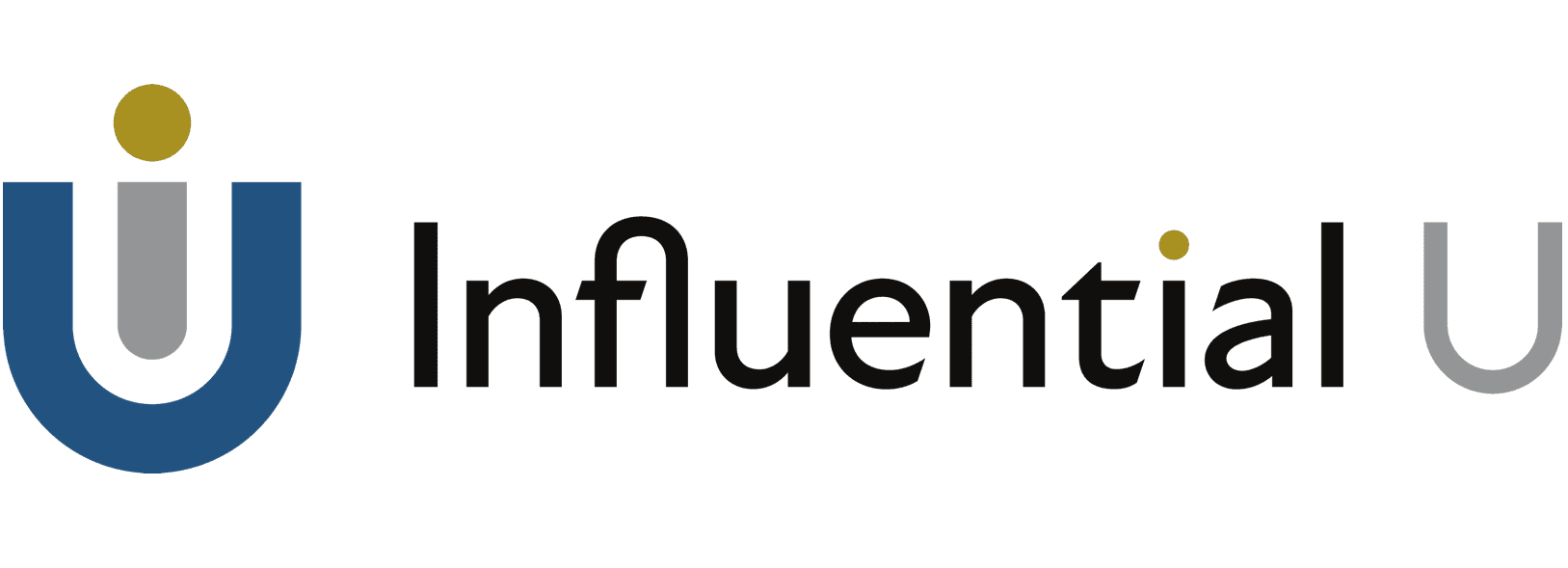The greatest innovations in history share one common ingredient: they convert scarce resources into abundant ones. This secret recipe begins with a reinvention of tangible, intangible, and human assets. So what is the formula?
Unpacking Innovation
At our January 2022 Annual Member Conference, we’ll launch the theme of the Year—Reinvention: the process of innovation. There, we take a deep dive into reinvention (note, it is one of the eight key exchanges in any transaction). One component of reinvention is innovation.
What is Innovation?
Innovation: An evolved or modified transaction reifying or redistributing value, resources, and activity.
What?
Innovation is an evolved or modified transaction (which includes exchanges, environments, objects, narratives, etc.) that reifies (makes something abstract more concrete and real) and redistributes (reallocates in a new or different way) value (relative utility and scarcity), resources (tangible, intangible, human), and activity (labor, work, and action).
We’ll explain, but first, understanding innovation begins with understanding the process. For example, the capstone of a pyramid sits atop a great number of stones below it. It is only possible atop what came before. So is innovation. Nothing is new, rather, it arises from the evolution or modification of an existing transaction(s). Rare (if not impossible) is an innovation that arises independently of anything before it.
What is the process?
Plainly said, (and what our 2022 Annual Member Conference is all about) you begin with an existing transaction you seek to reinvent. What is this transaction (business, situation, condition) and if it is not satisfying your aims, begin the process.
Step 1. Focus on one grand aim
For simplicity, we’ll borrow from the best. You could think of one grand aim as a Big, Hairy, Audacious Goal or BHAG — a term coined by Jim Collins and Jerry Porras in their book, Built to Last: Successful Habits of Visionary Companies. A BHAG is clear and compelling, needing little explanation; people get it right away. Think of the NASA moon mission of the 1960s. The best BHAGs require both building for the long term AND exuding a relentless sense of urgency: What do we need to do today, with monomaniacal focus, and tomorrow, and the next day, to defy the probabilities and ultimately achieve our BHAG?
In many cases, this is one grand aim that is quite pivotal to building satisfaction across a broad range of conditions of life. This is true for personal aims as well as enterprise aims.
Step 2. Inventory your resources
The mistake most people make when they set about their activity of reinvention is to aim the largest share of their mental efforts toward that of the promising possibilities or potentiality—those things wanted and consequences sought—rather than accounting or assessment of the facts of the situation and the resources one has at their disposal to deploy in the service of acting.
Generally, this inquiry should focus on the three primary types of resources: tangible, intangible, and human.
By tangible, we mean physical assets and financial resources. Intangible resources include brand, business and personal reputation(s), goodwill, culture, etc. Human resources comprise the competencies, specialized knowledge, and skill of those committed to the enterprise or specific transactions. These comprise the fundamental resources required to fulfill the day-to-day processes in today’s marketplace for any business professional or enterprise committed to transacting in today’s competitive marketplace.
Few business professionals take the time to carefully consider these as limited resources. It is uncommon to witness a recurrent practice of examining and judging the facts about them prior to making substantial moves or changes in strategies and tactics.
Step 3. Inquire with accomplished specialists (inside or outside your industry)
In many ways, this is a subset of Step 2. You have access to accomplished specialists (human resources) all around you. For example, at any one of our global conferences, there are hundreds of others who are available to help you consider your aims, resources, and how you might think in new ways about achieving your aims. Talk to those who have done it. Where possible, request time to interview others about their journey, strategies, or consideration of resources.
The point here is to expand your thinking by including other brains besides your own.
Step 4. Reconsider your resources (the key ingredient)
If we have an aim that is not being met, perhaps we’ve not considered the wealth of resources one transaction away.
We hear customers say, “I can’t because (fill in the missing resource).”
Perhaps the innovation lies in considering resources beyond what we can touch or say we own. Maybe these resources, if considered, might open our eyes to true innovations. Innovations that meet our own aims and the aims of a great number of others who are one transaction away.
Plainly consider the phrase “I/we can’t because (fill in the missing resource).” What is your answer to the question? I can’t because I don’t have time, we can’t because we don’t have the team, we can’t because we don’t have a marketing budget, etc.
That resource, if made accessible, could make something previously scarce, difficult, or expensive, less so. It can swiftly change the way things are done. It can substantially alter what we can accomplish. We’ll discover how many resources are only a transaction away.
First, consider we are naïve to an abundance of resources (only a transaction away). At the same time, we exhaust too many of the limited resources we have on activities that produce little or no “real” value. How do we improve our situation?
Improvements
Innovation’s aim is an improvement: more value, more utility, less scarcity, more resources, less labor, less work, etc. Ultimately, the aim is to achieve more, faster with less friction and dysfunction. However, innovation has “the potential to completely change the way we perceive the world and carry out our daily duties.”
Innovation inherently solves a multiplicity of breakdowns. Hence, it has the potential to accelerate the satisfaction of multiple conditions of life simultaneously.
What we are improving is the ability to quickly and easily satisfy many situations we previously could not. This step of innovation is to consider what aims are not being satisfied and what resources, if available, would change the game. How do we get those resources? Is the answer a new approach, new technology, or savings garnered somehow else?
The greatest innovations in history share one common ingredient: they convert scarce resources into abundant ones.
What are some examples of this conversion? An article titled, Innovation: A Taxonomy – The Atlantic magazine, surveyed a group of eminent historians to create a ranked list of the 50 Greatest Inventions of the 21st Century. The article’s mere classifications allow us to see how these innovations convert scarce resources into abundant ones and accelerate the satisfaction of multiple conditions of life simultaneously. These are:
- Innovations that expand the human intellect
- Innovations that are integral to the physical and operating infrastructure
- Innovations that enabled the Industrial Revolution and its successive waves of expanded material output
- Innovations extending life
- Innovations that allowed real-time communication beyond the range of a single human voice
- Innovations in the physical movement of people and goods
- Organizational breakthroughs that provide the software for people working and living together in increasingly efficient and modern ways
The premise underscored above is that if we are to evolve or modify a transaction reifying or redistributing value, resources, and activity, a reconsidered inventory of resources may begin to show us the limits of our current thinking.
For example, modifying the taxi market to redistribute the job to millions of drivers gives rise to Uber. The resources revealed by the shared economy (plus digital technologies) allowed for innovation.
Where innovation is the aim, the primary question to ask is, “What transaction must I modify to redistribute value, resources, and activity?”
Disruptions
Innovations may (but are not required by definition) disrupt the existing allocation of value, resources, and activity. We often see a radical change to an existing industry or market due to technological or ideological innovations. In business theory, disruptive innovation is an innovation that creates a new market and value network and eventually displaces established market-leading firms, products, and alliances.
An intent to disrupt, however, can illuminate breakdowns in current solutions. If we seek to lead the market, we might look to solve the current or pending breakdowns in a specific market or category.
Step 5. Transact for scarce resources
Any resource is a transaction away. Perhaps the innovation lies in considering resources beyond what we can touch or say we own. How might we transact for the missing resource? What might we exchange for value?
In our Mechanics and Practice Program, we approach reinvention with the simple objective to “concentrate resources and focus possibilities.”
To construct powerful and effective transactions, we must begin with a clear understanding of the most important resources available to us. It is our experience that most adults, moving through their day-to-day activities of life, are naïvely unaware of the limited resources they have at their disposal, as stated in Step 2. As a result, they spend too many of the limited resources they have on activities that produce little or no “real” value in satisfying their most important aims.
Yet, reinvention may lack innovation (if desired) when an inventory of resources doesn’t include a deeper dive into what resources (tangible, intangible, and human) are only a transaction away. For example, Uber considered the millions of unused cars and drivers amongst its resources.
Step 6. Begin PSTI (planning, strategy, tactics, and implementation)
PSTI (planning, strategy, tactics, and implementation) is the activity of our most advanced program. Planning is the activity of inquiry that inventories the resources for a plan—this is where this article has spent the most time. Strategy is the selection of a general course of action. Tactics (the forerunner of action) are written descriptions of the actions. Implementation is just that, an implementation of the tactics. For example, I plan to go from LA to New York. I inventory my resources—time, money, etc and from that, determine a strategy (e.g. take a bus). Now I describe my tactics (go online, look at routes, purchase a ticket) then implement my plan.
Three Modern Examples
Each of these examples offers a view into redistributing value, resources, and activity. They also solve for a multiplicity of breakdowns and accelerate the satisfaction of multiple conditions of life simultaneously.
THE INTERNET, JANUARY 1983 The Internet has evolved into a key enabler of today’s economy and society. It has become integral to business, communication, education, and community building, as well as an essential tool in social life, empowering individuals, and communities in ways previously unimagined.
The Internet is bringing about unprecedented growth in global citizenry and an increasing diversity of stakeholders across an ever-broadening set of issues and causes. The Internet, directly and indirectly, is changing governance structures and bringing new levels of openness, accountability, and participation, affecting change around the globe.
These changes are possible because the Internet encourages and facilitates the coming together of individuals, communities, entrepreneurs, activists, and many others in new and innovative ways.
UBER, MARCH 2009
Uber disrupted an industry by offering something cheaper, easier, and modernized. As opposed to hailing a taxi from the sidewalk, fumbling through your pockets for a few dollar bills, and then debating over how much to tip, you simply press a button on an app.
Uber took advantage of the emergent sharing economy—an innovation itself. The sharing economy is a socio-economic system built around the sharing of resources. These systems often leverage digital platforms to empower individuals, corporations, non-profits, and governments with information that enables distribution, sharing, and reuse of excess capacity in goods and services.
The sharing economy gave rise to shared resources such as music, homes, cars, scooters, and more. It reduced the cost of many goods and services in excess—it redistributes and reallocates value, resources, and activity.
Compared to taxis, Uber removed the friction at every exchange in the transaction, took advantage of the shared economy, and gave thousands with extra time and a car the opportunity to make some extra cash.
BITCOIN, 2009
Bitcoin was created in 2008-2009 on the heels of the economic recession. Bitcoin was created as an electronic peer-to-peer cash system but has also attracted investors as a store-of-value currency, comparable to gold. It is claimed to be, “The biggest financial innovation of the fourth industrial revolution and a portfolio’s efficiency booster.”
It removed currency from the hands of governments and placed it into a peer-to-peer model, reallocating monetary value and resources.
Articles on Innovation and Resources
With the context of resources in mind, review these articles on top innovations. You’ll see that time and time again, these innovations evolved or modified transactions reifying or redistributing value, resources, and activity.
Top Innovation Lists
Innovation: A Taxonomy – The Atlantic
https://www.theatlantic.com/magazine/archive/2013/11/innovations-list/309536/
The Atlantic surveyed a group of eminent historians to create a ranked list of the 100 people who had done the most to shape the character of modern America.
50 Greatest Inventions of the 21st Century
https://www.inventiongen.com/greatest-inventions-of-the-21st-century/
The list of greatest inventions of the 21st century is always significant. Inventions have made our life dynamic and easy. We are indebted to the greatest inventions of the 21st century.

AUTHOR
John Patterson
Co-founder and CEO
INFLUENTIAL U
John Patterson co-founded and manages the faculty and consultants of Influential U global. Since 1987, he has led workshops, programs, and conferences for over 100k people in diverse professions, industries, and cultures. His history includes corporate curriculum design focusing on business ecosystems, influence, leadership, and high-performance training and development.



